Related Research Articles
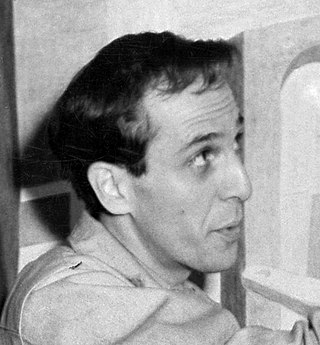
Philip Guston, was a Canadian American painter, printmaker, muralist and draftsman. Early in his five decade career, muralist David Siquieros described him as one of "the most promising painters in either the US or Mexico," in reference to his antifascist fresco The Struggle Against Terror, which "includes the hooded figures that became a lifelong symbol of bigotry for the artist." "Guston worked in a number of artistic modes, from Renaissance-inspired figuration to formally accomplished abstraction," and is now regarded one of the "most important, powerful, and influential American painters of the last 100 years." He also frequently depicted racism, antisemitism, fascism and American identity, as well as, especially in his later most cartoonish and mocking work, the banality of evil. In 2013, Guston's painting To Fellini set an auction record at Christie's when it sold for $25.8 million.
Harrell Fletcher is an American social practice and relational aesthetics artist and professor, living in Portland, Oregon.

John Wesley was an American painter, known for idiosyncratic figurative works of eros and humor, rendered in a precise, hard-edged, deadpan style. Wesley's art largely remained true to artistic premises that he established in the 1960s: a comic-strip style of flat shapes, delicate black outline, a limited matte palette of saturated colors, and elegant, pared-down compositions. His characteristic subjects included cavorting nymphs, nudes, infants and animals, pastoral and historical scenes, and 1950s comic strip characters in humorously blasphemous, ambiguous scenarios of forbidden desire, rage or despair.
The Washington Color School, also known as the Washington, D.C., Color School, was an art movement starting during the 1950s–1970s in Washington, D.C., in the United States, built of abstract expressionist artists. The movement emerged during a time when society, the arts, and people were changing quickly. The founders of this movement are Morris Louis and Kenneth Noland, however four more artists were part of the initial art exhibition in 1965.
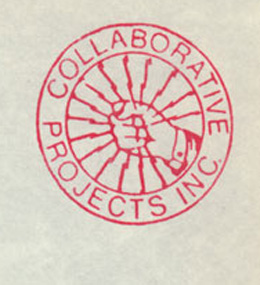
Colab is the commonly used abbreviation of the New York City artists' group Collaborative Projects, which was formed after a series of open meetings between artists of various disciplines.
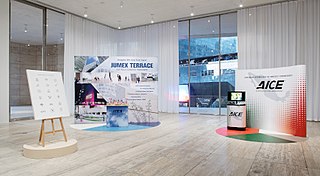
Michael Smith is an American artist known for his performance, video and installation works. He emerged in the mid-1970s at a time when performance and narrative-based art was beginning to claim space in contemporary art. Included among the Pictures Generation artists, he also appropriated pop culture, using television conventions rather than tropes from static media. Since 1979, much of Smith's work has centered on an Everyman character, "Mike," that he has portrayed in various domestic, entrepreneurial and artistic endeavors. Writers have described his videos and immersive installations as "poker-faced parodies" that sit on the edge between art and entertainment, examining ideas, cultural shifts and absurdities involving the American dream, consumerism, the art world, and aging. Village Voice critic Jerry Saltz called Smith "a consummate explorer of the land of the loser … limning a fine line between reality and satire [in] a genre sometimes called installation verité."
Mierle Laderman Ukeles is a New York City-based artist known for her feminist and service-oriented artworks, which relate the idea of process in conceptual art to domestic and civic "maintenance". She has been the Artist-in-Residence at the New York City Department of Sanitation. Her art brings to life the very essence of any urban center: waste flows, recycling, sustainability, environment, people, and ecology.
K8 Hardy is an American artist and filmmaker. Hardy's work spans painting, sculpture, video, and photography and her work has been exhibited internationally at the Whitney Museum of American Art, Tate Modern, Tensta Konsthalle, Karma International, and the Dallas Contemporary. Hardy’s work is included in the permanent collections of the Whitney Museum of American Art, the Solomon R. Guggenheim Museum, and the Museum of Modern Art. She is a founding member of the queer feminist artist collective and journal LTTR. She lives and works in New York, New York.
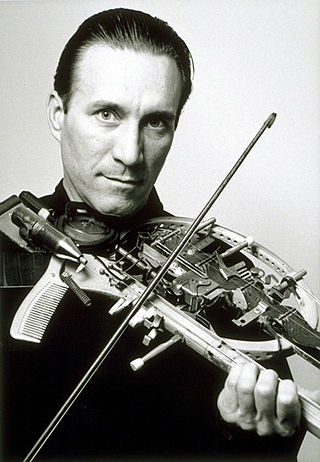
Kenneth Lee Butler is an American artist and musician, as well as an experimental musical instrument builder. His Hybrid musical instruments and other artworks explore the interaction and transformation of common and uncommon objects, altered images, sounds and silence. The idea of bricolage, essentially using whatever is "at hand", is at the center of his art, encompassing a wide range of practice that combines live music, instrument design, performance art, theater, sculpture, installation, photography, film/video, graphic design, drawing, and collage.

Thomas Lawson is an artist, writer, magazine editor, and Dean of the School of Art at California Institute for the Arts. He emerged as a central figure in ideological debates at the turn of the 1980s about the viability of painting through critical essays, such as "Last Exit: Painting" (1981), and as one of the artists in the loosely defined "Pictures Generation" group. He has been described as "an embedded correspondent [and] polemical editorialist" who articulated an oppositional, progressive position for representational painting from within an increasingly reactionary art and media environment. Artforum called his approach to the medium "one of the most cogent and controversial" in the 80s.
David Reed is a contemporary American conceptual and visual artist.
Tom Moody was an American visual artist, critic and blogger based in New York City. He began his career as a painter, using traditional materials, but became sensitive to the chemicals. In the mid-1990s, upon moving to New York, he began working with MS Paintbrush during downtime at a day job and continued using this abandonware throughout his life, despite more sophisticated programs such as Photoshop being widely available. Later works made use of animated GIF files.
Slavs and Tatars is an art collective and "a faction of polemics and intimacies devoted to an area east of the former Berlin Wall and west of the Great Wall of China known as Eurasia". Founded in 2006 as a collaboration between artists and designers Payam Sharifi and Kasia Korczak, the group’s work is centered on three activities: exhibitions, books and lecture performances.
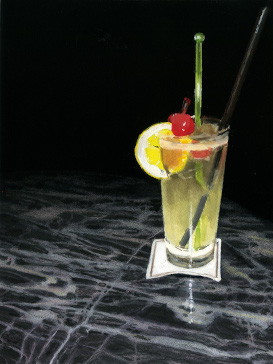
Dike Blair is a New York-based artist, writer and teacher. His art consists of two parallel bodies of work: intimate, photorealistic paintings and installation-like sculptures assembled from common objects—often exhibited together—which examine overlooked and unexceptional phenomena of daily existence in both a romantic and ironic manner. Blair emerged out of the late 1970s New York art scene, and his work relates to concurrent movements such as the Pictures Generation, Minimalism and conceptual art, while remaining distinct from and tangential to them. New York Times critic Roberta Smith places his sculpture in a "blurred category" crossing "Carl Andre with ikebana, formalist abstraction with sleek anonymous hotel rooms, talk-show sets with home furnishings showrooms." Cameron Martin writes in Artforum that the paintings are "rendered with a lucidity that extracts something metaphysical from the mundane."
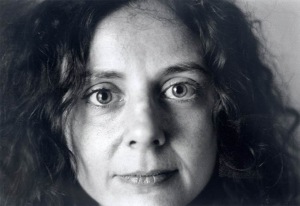
Lee Lozano was an American painter, and visual and conceptual artist.
Carrie Moyer is an American painter and writer living in Brooklyn, New York. Moyer's paintings and public art projects have been exhibited both in the US and Europe since the early 1990s.

Simone Leigh is an American artist from Chicago who works in New York City in the United States. She works in various media including sculpture, installations, video, performance, and social practice. Leigh has described her work as auto-ethnographic, and her interests include African art and vernacular objects, performance, and feminism. Her work is concerned with the marginalization of women of color and reframes their experience as central to society. Leigh has often said that her work is focused on “Black female subjectivity,” with an interest in complex interplays between various strands of history.
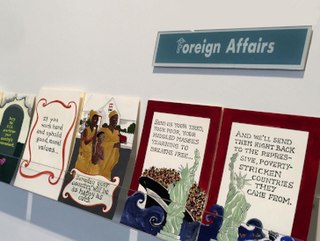
Erika Rothenberg is a Los Angeles-based conceptual artist whose work has included painting, drawing and photography, public art, sculpture and installation. Her art employs strategies and formats from mass media and persuasion, using words and images in familiar ways to present satirical, socially critical content, often with a subversive feminist point of view. In 2015, Artforum writer Michelle Grabner called Rothenberg's ironic use of vernacular signage and marketing strategies "relentless," characterizing her as "a harsh social critic with a facility for image-making, language and design … irony in Rothenberg’s hands is a barbed political weapon, and she wields it to underscore the very real injustices she observes in daily life."

Paul Winstanley is a British painter and photographer based in London. Since the late 1980s, he has been known for meticulously rendered, photo-based paintings of uninhabited, commonplace, semi-public interiors and nondescript landscapes viewed through interior or vehicle windows. He marries traditional values of the still life and landscape genres—the painstaking transcription of color, light, atmosphere and detail—with contemporary technology and sensibilities, such as the sparseness of minimalism. His work investigates observation and memory, the process of making and viewing paintings, and the collective post-modern experience of utopian modernist architecture and social space. Critics such as Adrian Searle and Mark Durden have written that Winstanley's art has confronted "a crisis in painting," exploring mimesis and meditation in conjunction with photography and video; they suggest he "deliberately confuses painting's ontology" in order to potentially reconcile it with those mediums.
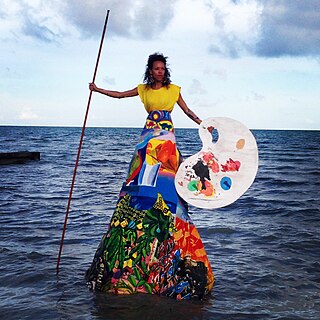
Paula Wilson is an African-American "mixed media" artist creating works examining women's identities through a lens of cultural history. She uses sculpture, collage, painting, installation, and printmaking methods such as silkscreen, lithography, and woodblock. In 2007 Wilson moved from Brooklyn, New York, to Carrizozo, New Mexico, where she currently lives and works with her woodworking partner Mike Lagg.
References
- ↑ Cotter, Holland (2007-03-21). "Collective Creation, in Philadelphia and Beyond". The New York Times. ISSN 0362-4331 . Retrieved 2022-09-09.
- ↑ Stadler, Matthew (March 2006). "On Site: Red76". Artforum. Retrieved 2023-01-09.
- ↑ Jahn, Jeff "Something to Prove" Modern Painters Spring (2003)
- ↑ "Democracy in America | The National Camgaign". creativetime.org. Retrieved 2022-09-09.
- ↑ Bovee, Katherine http://www.portlandart.net/archives/2005/07/report_from_tak.html PORT (2005)